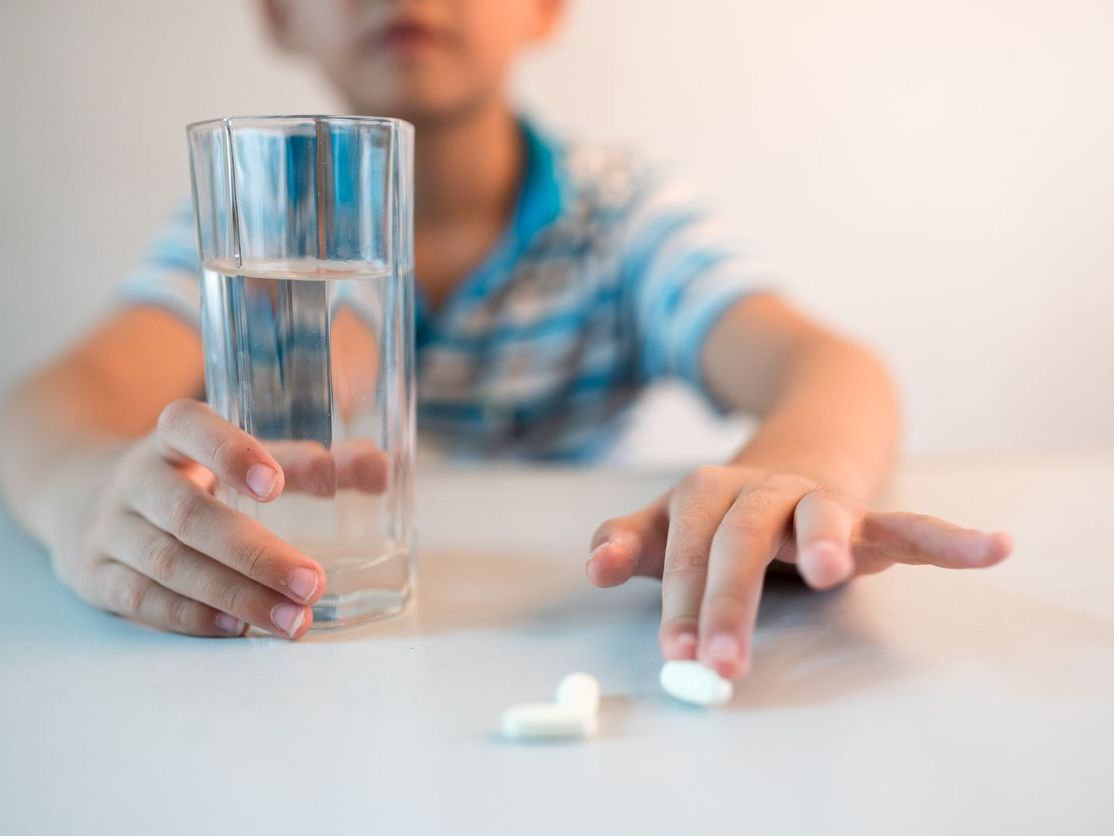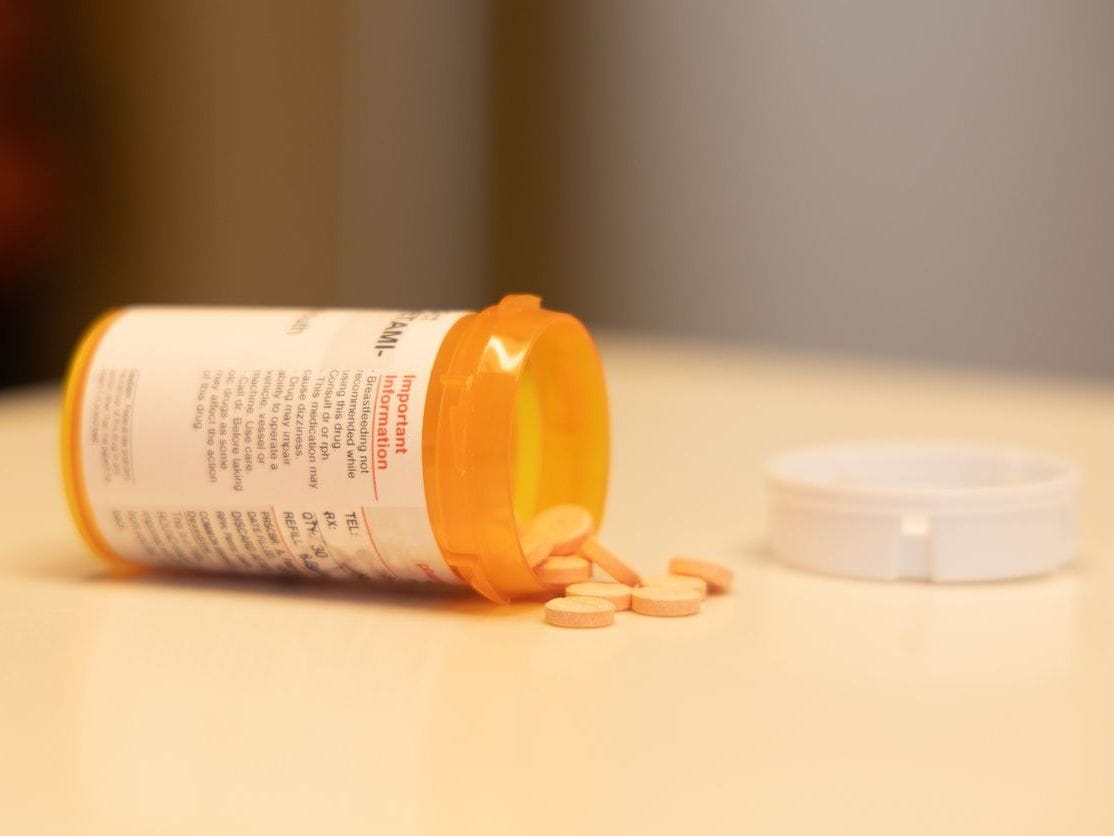What You Need to Know About Clonidine

The Bottom Line
Clonidine is a medication used to treat high blood pressure and attention deficit hyperactivity disorder. In overdoses, clonidine can cause low heart rate and blood pressure, drowsiness, and shallow breathing. Only take clonidine as directed by your doctor to avoid unwanted adverse effects.

What is clonidine?
Also known as Catapres or Kapvay, clonidine is commonly prescribed to both adults and children for a variety of conditions. It is primarily used for high blood pressure and attention deficit hyperactivity disorder (ADHD). It has also been used to treat opioid, alcohol, and nicotine withdrawal symptoms and hot flashes. Clonidine works by activating a receptor in the brain that decreases blood pressure and heart rate.What are the side effects of clonidine?
The most serious side effects of clonidine are lowering of the heart rate and relaxation of blood vessels, which can cause low blood pressure. Clonidine can also cause drowsiness, dizziness, dry mouth, and constipation.Guanfacine vs. clonidine: What are the differences?
Guanfacine (i.e., Intuniv) and clonidine work similarly. However, guanfacine lasts longer in the body than clonidine, which sometimes is dosed multiple times per day.What should I know about the clonidine patch?
In addition to tablets, there is a once-weekly clonidine patch. This can be an easier option for people who don’t want to take a pill multiple times per day. Because a used patch still has some medication left in it, it is important to prevent children or pets from accessing it after it has been removed. Carefully fold the used patch in half with the sticky sides together before disposal.Clonidine can cause very serious or even life-threatening poisoning in children or pets if the patch is chewed or swallowed. Remember to take the old patch off before applying a new one.
Can I take clonidine and drink alcohol?
When taken together, the effects of clonidine and alcohol can be more pronounced, resulting in headache, feelings of faintness, and increased drowsiness. Use caution if you are going to have an alcoholic drink while on clonidine and do not drive. Excessive alcohol consumption while on this medication is never recommended.Is clonidine addictive?
Clonidine is not addictive on its own. However, it can enhance the effects of drugs such as opioid pain medicines and sedatives that are addictive. For this reason, clonidine is sometimes taken with drugs of abuse. This can be particularly dangerous because of the effects of combining medications. Sometimes, clonidine is used to treat withdrawal symptoms in people who are addicted to opioids.What is clonidine rebound?
Clonidine rebound happens when someone suddenly stops taking the medication and their blood pressure gets very high, or “rebounds.” Talk to your doctor before stopping the medication because you may need to slowly reduce your dose over a period of time or monitor your blood pressure.Clonidine overdose: what should I do if I took too much clonidine?
If you think you or someone else took too much clonidine, immediately contact the poison center at 1-800-222-1222 for further guidance. Guidance is also available through the webPOISONCONTROL online tool. Poison Control’s expert guidance is always free, confidential, and available 24 hours a day.
Han Yoo, PharmD, SPI
Pharmacist and Specialist in Poison Information
Poison Control Media Information
Did you find this page helpful? If so, we need your support. Poison Control is in constant competition with misinformation online. Links to www.poison.org or our webPOISONCONTROL triage tool from other websites and blogs help internet searchers quickly find accurate information and Poison Control’s contact information in an emergency. If you use the content from this page, please provide attribution via a link back to this page, www.poison.org, or https://triage.webpoisoncontrol.org/#!/exclusions. By doing so, you could save a life. Thank you!
Poisoned?
Call 1-800-222-1222 or
Prevention Tips
- Always store medicines away and out of sight of children.
- Always take clonidine exactly as instructed by your doctor.
- Notify your doctor or pharmacist before starting on any other medications while on clonidine.
- Even used patches can have large amounts of a drug remaining in them. Make sure to carefully dispose of any patches that are used by folding each patch in half with sticky sides together. Dispose of the patches out of reach of children and pets.
- Always remove the old patch before placing on a new patch.
- Talk to your doctor before stopping clonidine.
This Really Happened
Case 1: A 3-year-old child ingested 20 to 30 tablets of clonidine 0.1 mg tablets. She experienced drowsiness, low blood pressure, rapid breathing, shortness of breath, cold extremities, and abnormally fast heartbeats. She then developed an abnormal heart rhythm and despite resuscitation efforts, she died.
Case 2: A family called 911 because their 2-year-old-boy was not waking up from his nap.
2 hours earlier, he had gotten into his grandmother’s pill minder. They did not think anything was missing at the time and let him go down for his nap. In the pill minder, there were vitamins and clonidine tablets. Paramedics arrived to the scene and the child was noted to be very tired, have a slow heart rate, and small pupils. They administered naloxone, which seemed to help slightly. Naloxone is used as an antidote for opioid overdose, but has some utility in clonidine overdose as well. The ambulance transported the child to the hospital, where he was given more naloxone, oxygen, and atropine, a medication to help increase the heart rate. The child improved over the next 24 hours and was discharged home. The family was educated about keeping medications safely stored.
Case 3: A 56-year-old man residing at a nursing home was acting noticeably sleepier in recent days. A nurse noticed he had 2 clonidine patches on. They realized that 1 was applied on Tuesday and another 1 was applied on Wednesday. Normally, he was supposed to have a new 1 applied every week. His blood pressure was low at 94/62 mmHg. It was normally 120s/80s. The team called Poison Control and was instructed to remove the patch, wash the area, and send the patient to the emergency department. He was also on other medicines taken by mouth for his blood pressure. Poison Control recommended to hold off on using the other blood pressure medications until he was evaluated by a physician. The patient was admitted to the hospital for monitoring overnight. His blood pressure remained on the lower side and his heart rate was slower than normal. He was a little dizzy when standing up, but had no other symptoms. By the following day, his blood pressure and heart rate came up enough for him to be sent home.
References
Sanklecha M, Jog A, Raghavan K. Clonidine casualty. Indian J Pediatr. 1993; Jul-Aug;60(4):611-2.
Clonidine addiction: Side effects, withdrawal & signs of overdose. American Addiction Centers. September 13, 2022. Accessed July 31, 2023. https://americanaddictioncenters.org/prescription-drugs/clonidine.
Chiu S, Campbell K. Clonidine for the Treatment of Psychiatric Conditions and Symptoms: A Review of Clinical Effectiveness, Safety, and Guidelines [Internet]. Ottawa (ON): Canadian Agency for Drugs and Technologies in Health; 2018 Feb 21. Available from: https://www.ncbi.nlm.nih.gov/books/NBK531717/
Clonidine abuse. 2000. Journal of psychoactive drugs 32, (1) (Jan): 131, http://proxygw.wrlc.org/login?url=https://www.proquest.com/scholarly-journals/clonidine-abuse/docview/207976087/se-2 (accessed July 19, 2023).
Macgregor TR, Matzek KM, Keirns JJ, van Wayjen RG, van den Ende A, van Tol RG. Pharmacokinetics of transdermally delivered clonidine. Clin Pharmacol Ther. 1985 Sep; 38(3) 278-84
Strange BC. Once-daily treatment of ADHD with guanfacine: patient implications. Neuropsychiatr Dis Treat. 2008 Jun; 4(3):499-506. doi: 10.2147/ndt.s1711. PMID: 18830439; PMCID: PMC2526381.
Poisoned?
Call 1-800-222-1222 or
Prevention Tips
- Always store medicines away and out of sight of children.
- Always take clonidine exactly as instructed by your doctor.
- Notify your doctor or pharmacist before starting on any other medications while on clonidine.
- Even used patches can have large amounts of a drug remaining in them. Make sure to carefully dispose of any patches that are used by folding each patch in half with sticky sides together. Dispose of the patches out of reach of children and pets.
- Always remove the old patch before placing on a new patch.
- Talk to your doctor before stopping clonidine.
This Really Happened
Case 1: A 3-year-old child ingested 20 to 30 tablets of clonidine 0.1 mg tablets. She experienced drowsiness, low blood pressure, rapid breathing, shortness of breath, cold extremities, and abnormally fast heartbeats. She then developed an abnormal heart rhythm and despite resuscitation efforts, she died.
Case 2: A family called 911 because their 2-year-old-boy was not waking up from his nap.
2 hours earlier, he had gotten into his grandmother’s pill minder. They did not think anything was missing at the time and let him go down for his nap. In the pill minder, there were vitamins and clonidine tablets. Paramedics arrived to the scene and the child was noted to be very tired, have a slow heart rate, and small pupils. They administered naloxone, which seemed to help slightly. Naloxone is used as an antidote for opioid overdose, but has some utility in clonidine overdose as well. The ambulance transported the child to the hospital, where he was given more naloxone, oxygen, and atropine, a medication to help increase the heart rate. The child improved over the next 24 hours and was discharged home. The family was educated about keeping medications safely stored.
Case 3: A 56-year-old man residing at a nursing home was acting noticeably sleepier in recent days. A nurse noticed he had 2 clonidine patches on. They realized that 1 was applied on Tuesday and another 1 was applied on Wednesday. Normally, he was supposed to have a new 1 applied every week. His blood pressure was low at 94/62 mmHg. It was normally 120s/80s. The team called Poison Control and was instructed to remove the patch, wash the area, and send the patient to the emergency department. He was also on other medicines taken by mouth for his blood pressure. Poison Control recommended to hold off on using the other blood pressure medications until he was evaluated by a physician. The patient was admitted to the hospital for monitoring overnight. His blood pressure remained on the lower side and his heart rate was slower than normal. He was a little dizzy when standing up, but had no other symptoms. By the following day, his blood pressure and heart rate came up enough for him to be sent home.
